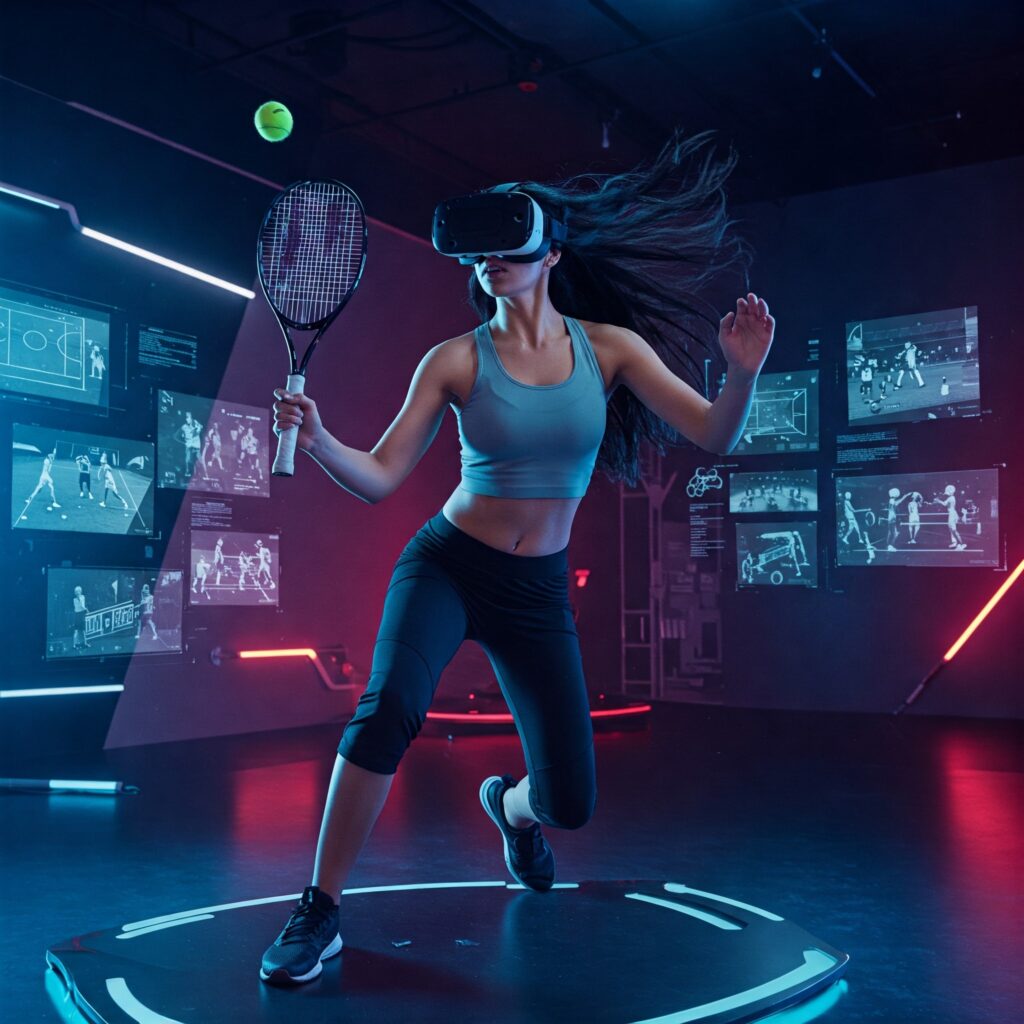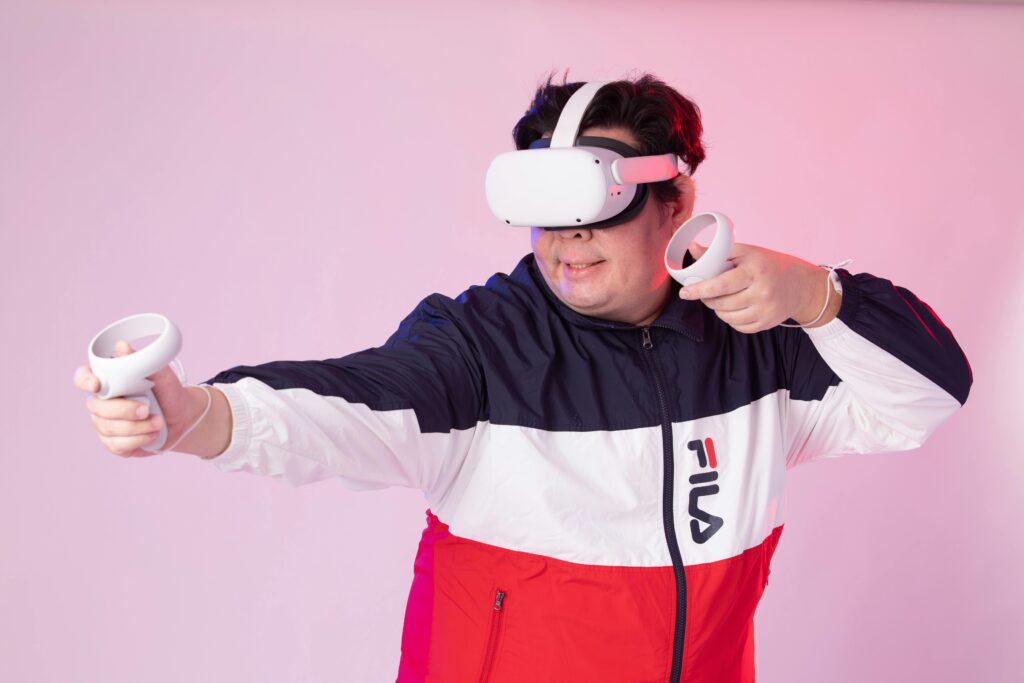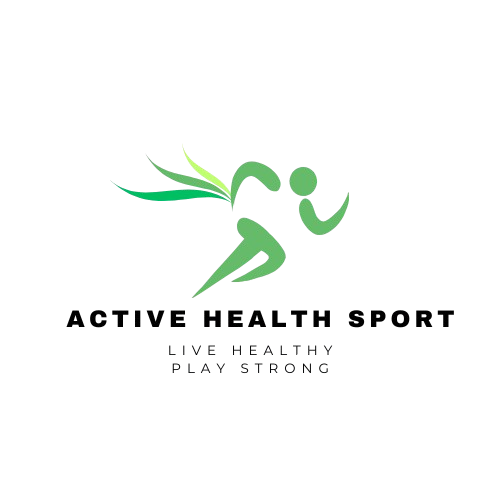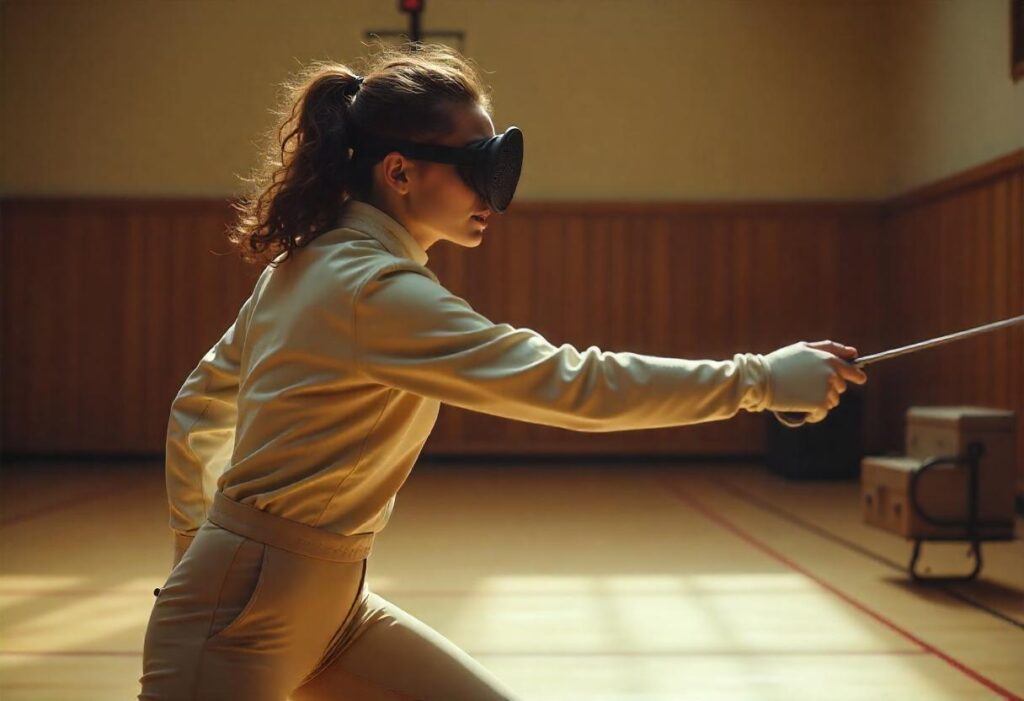One of the most exciting innovations in the world of sports training is the integration of Virtual Reality (VR). This exceptional technology is redefining how athletes prepare, train, and recover, offering an immersive and highly effective method to enhance performance.
At Active Health Sport, we are dedicated to exploring these advancements and how they can help athletes of all levels optimize their training. In this blog, we will explore the fascinating world of Virtual Reality in sports training, highlighting its benefits, challenges, and the future potential it holds for athletes. Whether you’re an amateur enthusiast or a professional athlete, VR offers countless possibilities to improve your skills and mental toughness, pushing your boundaries like never before.
What is Virtual Reality (VR)?
Before we dive into its impact on sports, it’s essential to understand what Virtual Reality (VR) is and how it works. VR is a computer-generated simulation that immerses users in a three-dimensional environment. Using special headsets and other devices, users can interact with this environment as if they were physically present in it.
The VR experience can simulate a variety of real-world scenarios, providing both visual and sensory stimuli. In sports, this technology allows athletes to practice techniques, refine their skills, and experience game-like situations without being physically present on a field or court.
The Role of Virtual Reality in Sports Training
1. Enhancing Mental Preparation
The physical aspect of training is just one part of an athlete’s journey. Mental preparation plays a crucial role in an athlete’s success. Virtual Reality (VR) training offers an immersive environment where athletes can practice visualization techniques, mental toughness, and focus.
For example, VR can simulate a high-pressure game situation, allowing athletes to train their brains to perform under stress. They can experience crowd noise, intense competition, and high-stakes moments while sitting in a comfortable environment. This helps athletes improve their reaction times, decision-making, and ability to stay calm in tense situations.
2. Skill Development and Repetition
The power of VR in sports training lies in its ability to facilitate high-frequency practice and repetition without risking injury or fatigue. VR simulations allow athletes to perform specific movements or techniques over and over again, refining their skills in a safe, controlled environment.
In sports like football or basketball, athletes can work on passing accuracy, shooting form, or footwork through VR. In addition, the technology allows for immediate feedback on their performance, helping athletes understand what they need to improve on and make necessary adjustments.
For example, a football quarterback can practice throwing passes to virtual receivers in different weather conditions or against various defensive strategies. Similarly, a basketball player can rehearse free throws or dribbling techniques without ever leaving the gym.
3. Injury Recovery and Rehabilitation
Virtual Reality is also becoming an integral part of the rehabilitation process for athletes recovering from injuries. Traditional recovery methods often involve a long and tedious period of physical therapy, but VR is changing that.
With VR, athletes can engage in rehabilitation exercises that not only focus on physical healing but also on mental recovery. VR can simulate environments where an athlete can move through light drills, enhancing coordination and body movements while staying within their physical limits. It’s a tool that promotes faster recovery and minimizes the chance of re-injury.
4. Tactical and Situational Awareness Training
One of the biggest advantages of VR in sports training is its ability to recreate game scenarios that athletes face during real competitions. VR allows coaches and trainers to replicate different game situations, enabling athletes to practice and perfect their decision-making skills.
For instance, a soccer player can experience virtual opponents, analyze their movements, and adjust their positioning accordingly, all within the VR environment. This type of situational awareness training is essential for athletes who must respond quickly to changing circumstances during a game.
In addition, VR can help teams develop and practice their strategies, allowing players to familiarize themselves with specific plays and formations in a low-pressure environment.
Advantages of Virtual Reality in Sports Training
1. Improved Performance Without Physical Strain
Virtual Reality training offers a unique advantage: athletes can improve their skills without the physical toll that comes with traditional practice. In contact sports like rugby or martial arts, VR can provide a safe training alternative, where athletes can practice aggressive movements or tackles without the risk of injury.
The ability to work on certain aspects of performance without over-exerting the body helps athletes stay fresh and avoid burnout. Whether it’s a sprinting technique, a jump shot, or tactical movements, VR allows athletes to train smarter and more effectively.
2. Real-Time Feedback and Analytics
One of the greatest benefits of VR is the ability to receive instant feedback. As athletes perform drills in a virtual environment, the system can analyze their movements and provide immediate data on how to improve.
For instance, a tennis player can receive real-time analysis of their swing mechanics, stance, and positioning during a serve. Similarly, a track athlete can receive precise information about their running form and stride, helping them make adjustments that improve efficiency.
This type of data-driven approach accelerates the learning process, helping athletes improve faster than traditional methods.
3. Accessibility for All Athletes
Another significant benefit of VR is its ability to make high-quality training accessible to athletes at all levels. Traditional sports training requires access to specific equipment, coaches, and physical spaces. However, with VR, athletes can train anywhere at home, in a hotel room, or even in their office.
This democratization of training means that even those who don’t have access to top-tier sports facilities or coaches can still benefit from high-level training simulations. All you need is a headset and a VR platform that offers relevant drills and training routines.
4. Reduced Risk of Overtraining
Overtraining can be a significant issue for athletes, especially during intense training seasons. It increases the risk of injury and can negatively impact performance. By incorporating VR training, athletes can get valuable reps without the physical strain that comes with traditional practice. This can help reduce the chances of overtraining while still making progress in skill development.
Also Read the Latest: The Best 20 Sports Documentaries to Read & Inspire (2025)

What are the Virtual Reality Applications Across Different Sports?
Let’s look at how Virtual Reality (VR) is being applied across various sports, transforming how athletes train.
1. Football (Soccer)
Footballers are increasingly using VR to improve their reaction times and understand game tactics better. VR simulations allow players to practice dribbling, shooting, and passing in a virtual environment, offering detailed feedback on their performance. This technology helps players perfect their technique while reducing the physical demands of training.
2. Basketball
Basketball players use VR for shooting drills, footwork, and game strategy. They can experience game scenarios, perfect their shots, and visualize plays. VR also helps with mental training, allowing athletes to handle the pressure of high-stakes moments, such as free throws in the final seconds of a game.
3. Baseball
In baseball, VR is used to train batters by simulating different pitch speeds, angles, and spin types. This enables players to improve their reaction times and refine their batting technique. Pitchers also benefit from VR training, where they can practice their pitching form and strategy in various game conditions.
4. Golf
Golfers use VR to perfect their swing, stance, and course management. VR can simulate different courses, weather conditions, and live situations, allowing golfers to practice without setting foot on a real course. Virtual coaches also provide real-time feedback to enhance their training experience.
5. Tennis
In tennis, VR allows players to simulate real-world matches and work on their serving, footwork, and positioning. Players can also practice returning serves from virtual opponents, helping them improve their reaction times and shot selection.
How Virtual Reality Is Changing Coaching and Training?
Virtual Reality (VR) is not only benefiting athletes but also changing how coaches and trainers approach their training methods. By using VR, coaches can get a deeper understanding of their athletes’ performance and provide more personalized, data-driven feedback.
Coaches traditionally observe athletes in real-time during training sessions, but VR provides a unique opportunity to see an athlete’s performance from a variety of angles. With VR simulations, coaches can analyze the athlete’s movements, technique, and decision-making skills in real time.
VR platforms often offer detailed analytics, such as the speed of a movement, the angle of a throw, or the timing of a jump. This data enables coaches to provide valuable insights that were previously difficult to capture with traditional training methods.
For example, in football, coaches can observe how a quarterback releases the ball under different simulated defensive pressures. They can analyze this in slow motion or from different angles to understand how to improve the player’s throwing mechanics or decision-making under pressure.
Every athlete has unique needs, strengths, and areas of improvement. VR provides a way to create highly personalized training regimens. With the ability to simulate specific scenarios, coaches can craft individual programs tailored to each athlete’s goals. Whether it’s improving shooting accuracy in basketball, reaction time in baseball, or tackling football skills, VR makes it possible for coaches to offer detailed and customized feedback.
For example, a coach working with a tennis player might use VR to simulate different types of serves from various opponents. Based on the player’s performance, the coach can adjust the simulation to challenge the athlete’s weaknesses, gradually increasing the difficulty to match the player’s progress.
Another fascinating way that VR is enhancing coaching is through virtual sparring and opponent simulation. Coaches can set up simulations of opponents to help athletes prepare for real-life challenges they might face in competitions. In sports like boxing, MMA, or even football, athletes can practice techniques, strategies, and movement patterns against a virtual opponent without the risk of injury.
For instance, in boxing, an athlete can spar against a virtual opponent who mimics the movements and tactics of a skilled fighter. This gives the athlete a chance to work on their defensive strategies, timing, and punch accuracy without stepping into the ring with another person. The coach can then review the athlete’s performance and refine their techniques accordingly.
Training sessions can often be a solitary experience, but VR opens the door for collaborative training. Teams of athletes can train together in a virtual environment, performing drills, discussing strategies, and offering feedback to each other in real-time.
For example, a soccer team can use VR to run through set plays, moving through various scenarios with the whole team participating virtually. This allows players to better understand their positioning, timing, and interactions with teammates, without needing to be physically present on the field.

Addressing the Limitations of VR in Sports Training
While Virtual Reality has brought incredible advancements to sports training, it’s important to acknowledge that there are some limitations to consider. Understanding these challenges will help us navigate how VR can be used most effectively.
Although VR technology has become more accessible, it still requires a specific set of equipment, including headsets, sensors, and sometimes even specialized gloves or suits to track movements. While these tools are becoming more affordable, they might still be out of reach for some athletes, coaches, or organizations. For teams with limited budgets, the upfront cost of VR systems may pose a barrier to adopting this technology.
However, as VR technology continues to advance, the cost is expected to decrease over time, making it more widely accessible. As demand increases and new companies enter the market, the hope is that VR systems will become more affordable for a broader range of athletes and training programs.
While VR offers an incredibly valuable tool for enhancing skill development, it is important to recognize that it cannot fully replace traditional physical training. VR training excels in refining techniques, improving mental preparation, and visualizing scenarios. However, physical strength, endurance, and the tactile feel of real-world interaction still play essential roles in an athlete’s development.
For example, a basketball player can practice shooting with VR, but they still need to physically practice those shots in a real court to develop muscle memory and improve their shot accuracy. VR training is highly effective when used in conjunction with physical practice, rather than as a standalone replacement.
One of the drawbacks of VR is that while it can replicate visual and auditory cues, it is still limited in terms of tactile feedback. The sensation of contact, such as the feeling of a basketball bouncing off the fingers or a tackle in football, cannot be perfectly replicated with current VR technology. This means athletes may miss out on important sensory information that can enhance real-world skill development.
That said, innovations in haptic feedback and technology that create physical sensations are emerging. These developments aim to address this limitation by allowing users to feel sensations like impact or resistance, further enhancing the immersive experience of VR.
As with any form of training, there is a risk of athletes becoming too reliant on technology. While VR offers tremendous potential for improving performance, athletes must also continue to engage in real-world, physical practice to build their instincts and adaptability.
Using VR training sessions in moderation and complementing them with traditional, on-field practice is the key to maximizing results. It’s essential for athletes to maintain a balanced practice, ensuring that technology enhances rather than replaces their real-world experience.
Also Read the Latest: AI Coaching: Transforming How We Learn, Grow, and Succeed
The Growing Adoption of VR in Professional Sports
In the past few years, professional sports organizations have been increasingly adopting VR as a tool for training and development. High-profile teams and athletes have invested in VR technology to gain a competitive edge, using it for everything from skill development to injury rehabilitation.
For example, the NFL has used VR to allow quarterbacks to experience in-game situations virtually. Through VR, they can simulate throwing passes against different defensive strategies, learning to read plays, and make split-second decisions. The NBA has also embraced VR, allowing players to practice shot-making in game-like scenarios, without needing a physical court.
The use of VR in professional sports has become a trend that will likely continue to grow as more teams, coaches, and athletes recognize its benefits. As the technology becomes more advanced and accessible, we can expect even more widespread adoption across all levels of sports.
The Impact of Virtual Reality on Fan Engagement
While VR is primarily used for training and performance enhancement, it also has the potential to revolutionize fan engagement in sports. Virtual Reality allows fans to experience games and events in an entirely new way, providing immersive experiences that bring them closer to the action than ever before.
Imagine watching a live football game from the quarterback’s perspective, or sitting courtside at a basketball game, all from the comfort of your own home. VR can create immersive experiences that make fans feel like they are part of the game, increasing their connection to the sport and their favorite teams.
Active Health Sport is excited to see how VR will shape the fan experience in the coming years, offering more interactive and engaging ways for people to connect with sports beyond just the traditional viewing experience.
The Future of Virtual Reality in Sports Training
As technology continues to evolve, the future of Virtual Reality in sports training looks incredibly promising. Advancements in VR hardware, such as lighter headsets, improved motion tracking, and more realistic environments, will further enhance the training experience for athletes.
The integration of artificial intelligence (AI) with VR platforms will make the technology even more personalized. AI can adapt the training program based on the athlete’s progress, analyzing data from previous sessions and adjusting future training to meet specific needs.
Moreover, mixed reality (MR), which combines the real world with virtual elements, may become more prevalent. This could allow athletes to train in actual environments while interacting with virtual objects or competitors, creating an even more immersive and engaging experience.

Closing Thoughts
Virtual reality is revolutionizing the way athletes train, bringing innovation and precision to every aspect of sports performance. By offering immersive, effective, and low-risk training methods, VR is enabling athletes to push their limits like never before. Whether it’s enhancing mental resilience, refining techniques, or aiding in injury recovery, the possibilities that VR brings to sports training are both exciting and transformative.
At Active Health Sport, we are passionate about exploring the latest advancements in sports technology, and virtual reality stands out as one of the most promising tools in shaping the future of athletic performance. From amateur enthusiasts to professional athletes, VR is leveling the playing field and redefining what’s possible in training environments.
As this technology continues to advance, the potential applications for VR in sports will only expand, offering new ways to hone skills, simulate game-day scenarios, and optimize physical and mental performance. The future of sports training is here, and it’s immersive, intelligent, and inspiring.
We’d love to hear your thoughts! How do you see virtual reality shaping the future of sports? Share your insights, questions, or experiences in the comments below. Together, let’s explore how innovation is transforming the world of athletics!
You might also like…
- Why a Digital Detox Before Bed Can Fix Your Sleep Faster
 The Modern Sleep Thief Hiding in Your Hand In a world where we check our phones hundreds of times a day, it’s no surprise our sleep has taken a hit.Most people scroll through social media, watch Netflix, or… Read more: Why a Digital Detox Before Bed Can Fix Your Sleep Faster
The Modern Sleep Thief Hiding in Your Hand In a world where we check our phones hundreds of times a day, it’s no surprise our sleep has taken a hit.Most people scroll through social media, watch Netflix, or… Read more: Why a Digital Detox Before Bed Can Fix Your Sleep Faster - How to Align Your Circadian Rhythm for All-Day Energy Gains
 Why You Feel Tired Even After Sleeping Enough Have you ever slept for eight hours and still felt groggy the next morning?The issue might not be how long you sleep, but when you sleep. Your body operates on… Read more: How to Align Your Circadian Rhythm for All-Day Energy Gains
Why You Feel Tired Even After Sleeping Enough Have you ever slept for eight hours and still felt groggy the next morning?The issue might not be how long you sleep, but when you sleep. Your body operates on… Read more: How to Align Your Circadian Rhythm for All-Day Energy Gains - Electrolytes vs. Water: What Active Adults Must Know
 Beyond Water, The Hidden Key to True Hydration Most adults know the rule, “Drink more water.”But few realize that hydration isn’t just about fluid intake. It’s about electrolyte balance, the invisible electrical system that keeps your muscles contracting,… Read more: Electrolytes vs. Water: What Active Adults Must Know
Beyond Water, The Hidden Key to True Hydration Most adults know the rule, “Drink more water.”But few realize that hydration isn’t just about fluid intake. It’s about electrolyte balance, the invisible electrical system that keeps your muscles contracting,… Read more: Electrolytes vs. Water: What Active Adults Must Know

Kait Amazra is the founder and lead writer of Active Health Sport. With over 25 years of experience in health, fitness, and wellness education, Kait combines professional expertise with a passion for helping people live stronger, healthier, and more balanced lives.
As a licensed health and fitness professional, Kait has worked alongside industry experts to deliver evidence-based insights on physical activity, nutrition, recovery, and holistic well-being. Through Active Health Sport, Kait’s mission is to make trusted, practical, and science-backed health information accessible to everyone, from beginners building new habits to athletes seeking peak performance.

